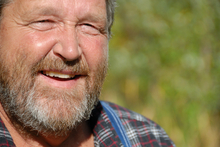Research published in the Journal of Veterinary Behavior finds that only one in twenty riders is a suitable weight for their horse and recommend that riders should weigh no more than 10% of their horse's weight. Heavier riders contribute to back pain, lameness and negative behavior in their horses.

Rider weight affecting horse health
According to Keith Chandler, president of the British Equine Veterinary Association, “A good proportion of our members’ time is taken up with dealing with lameness and back problems, and a proportion of them will be caused by the wrong riders on the wrong horses.“.
The study found that a third of recreational riders were too obese for their mounts, leaving the animals at risk of health problems such as back pain and lameness.
Horses carrying over weight riders are prone to behavior problems such as bucking, rearing and disobedience to commands.
The study assessed 152 riders from Cornwall and Devon.
The researchers, from the Duchy College in Cornwall, found that just eight of the riders (5 per cent) weighed less than 10 per cent of the weight of their horse. This is the “optimum” ratio on a set of guidelines worked out by vets.
Ninety-five of the riders (63 per cent) weighed between 10 and 15 per cent of the weight of their horse, which is considered “satisfactory”. Forty-nine of the riders (32 per cent) weighed more than 15 per cent of the weight of their animal, a ratio at which the guidelines state there is a welfare risk to the animal. The riders and horses were weighed without their saddles.
Ms Randle, who conducted the study with her fellow researcher, Emma Halliday, said the findings showed the need for the introduction of industry-wide guidelines to protect horses from overweight riders.
“The problem is that these ratios are not widely known by people in the horse industry,” she said. “People do seem generally to be a bit heavy for horses. That is just a consequence, I suppose, of our average weights going up.
“It is definitely a potential welfare issue. These are broad-brush guidelines. They don’t take account of all factors, such as the age of the horse, the breed, the style or riding or the experience of the rider. But they are still important and helpful and people are not taking enough notice of them.”
Keith Chandler, the president of the British Equine Veterinary Association, said: “A good proportion of our members’ time is taken up with dealing with lameness and back problems. And a proportion of them will be caused by the wrong riders on the wrong horses.
“Many riding schools are very aware of these problems and of exactly who can ride which horses and who cannot, but there are some horse people who may not fully understand the issues.
“There is a discussion which needs to take place in the horse riding community. There needs to be an awareness that some larger riders need to ride bigger horses.”
